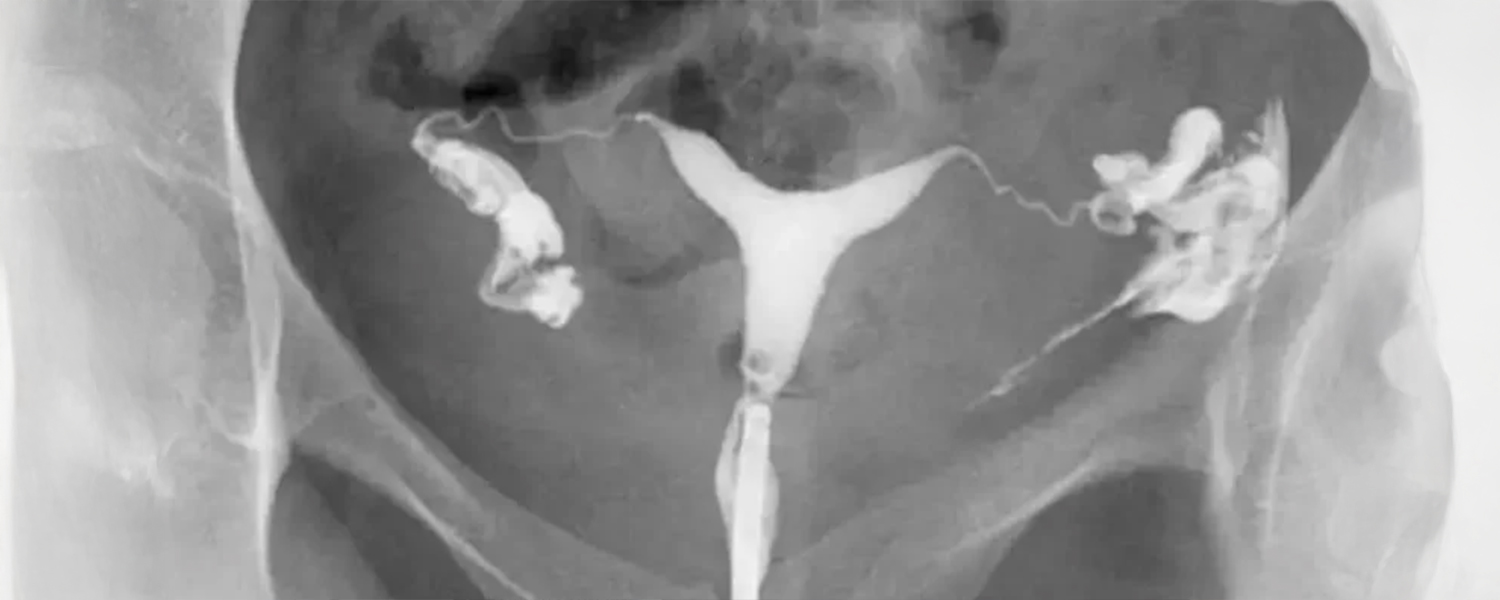Hysterosalpingogram (HSG)
Hysterosalpingogram (HSG)

Hysterosalpingogram (HSG)
Accurate Evaluation of Your Reproductive Health
Empowering women with precise insights into fertility health through safe and effective diagnostic imaging.
A Hysterosalpingogram (HSG) is an X-ray test that clearly visualises the inside of your uterus and fallopian tubes. This diagnostic procedure is instrumental in assessing fertility, helping identify potential issues that may affect your ability to conceive.
At Sikund Diagnostic Centre, our expert radiologists combine advanced imaging technology with a compassionate approach to ensure your experience is comfortable, accurate, and informative.
Why is HSG Recommended?
Your healthcare provider may suggest an HSG test if:
- You have experienced difficulty conceiving (infertility).
- You have a history of miscarriages.
- There is suspicion of uterine or tubal abnormalities, blockages, or scarring.
- You are undergoing fertility treatment and need an evaluation of reproductive anatomy.
Benefits of HSG Testing
- Early Identification of Fertility Issues:
Quickly detects blockages, scarring, or structural abnormalities in the uterus and fallopian tubes. - Improved Pregnancy Outcomes:
Early diagnosis facilitates timely and appropriate fertility treatments, enhancing your chances of conceiving. - Non-Surgical Procedure:
Provides valuable diagnostic information without invasive surgery, ensuring quicker recovery and minimal discomfort. - Fast and Accurate Results:
Immediate visualisation of reproductive structures allows your specialist to provide prompt feedback and planning.
What to Expect During the HSG Procedure
- Scheduling and Preparation:
The test is scheduled within the first 10 days following your menstrual cycle (typically between days 7-10). No special fasting is required, but pain medication or antispasmodics might be advised before the procedure to ease discomfort. - Imaging Preparation:
You will be comfortably positioned on an X-ray table. Our radiologist will gently insert a speculum, similar to a routine pelvic examination. - Contrast Injection:
A thin catheter is carefully inserted into the cervix, and a contrast dye is slowly introduced. This dye fills your uterus and fallopian tubes, clearly outlining their structure on X-ray images. - Imaging and Assessment:
X-ray images are taken, revealing the condition of the uterus and tubes. The procedure typically lasts between 15 to 30 minutes. - Immediate Results Review:
The radiologist reviews images instantly and explains preliminary findings clearly, answering any immediate questions you might have.

Patient Care and Aftercare
- During the Procedure:
You may experience mild-to-moderate cramping, similar to menstrual discomfort, which typically subsides quickly after the procedure. - Post-Procedure Instructions:
You can resume normal activities shortly after the test. Some mild spotting or discharge is common for a day or two after the procedure. - Precautions:
Notify your doctor if you experience severe cramping, heavy bleeding, fever, or unusual discharge, as these could indicate a rare infection.

Risks and Safety Information
The HSG test is generally very safe and complications are extremely rare. However, minimal risks include:
- Pelvic Infection: A very small risk (less than 1%). Symptoms include fever, significant pain, or abnormal discharge.
- Allergic Reaction: Rarely, a mild reaction to the contrast dye may occur.
At Sikund Diagnostic Centre, our meticulous sterile technique and experienced radiologists significantly reduce these risks, ensuring a safe, reassuring experience.
Frequently Asked Questions
Is the HSG procedure painful?
You may experience mild-to-moderate cramping, similar to menstrual cramps. Pain relief medication can be taken beforehand to manage discomfort.
How long does the HSG test take?
The procedure usually takes 15-30 minutes, including imaging and preparation.
How soon after HSG can I resume regular activities?
Most women return to normal daily activities immediately following the procedure.
Does HSG improve my chances of pregnancy?
While primarily diagnostic, the test may temporarily increase fertility rates slightly due to the flushing effect of the contrast dye on the fallopian tubes.
Need Expert Advice?
Request a Call Back
Today!
We’ll make a single attempt to contact you from a withheld number, typically within 24 hours of your request.
